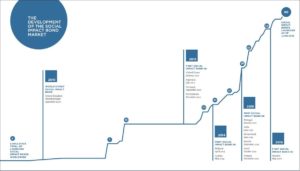Toby Eccles is the founder and Development Director at Social Finance.
This post originally appeared on Toby’s personal website. You can follow Toby on Twitter @tobyecc
Eight ways of mucking up outcomes based contracts
Payment by results has been getting a lot of grief recently. Some of it deserved.
The compulsion for revolution rather than evolution, and poor contracting and procurement practice have combined to create a heavily loss making industry that is not generating outcomes.
The fear is that when government doesn’t seem comfortable admitting to any previous mistake it may be in danger of repeating the mistakes it has made.
So, I thought I would help by consolidating my eight best ways of mucking up outcomes based contracts.
1) Set the maximum outcome payment at or below the value of the previous revenue contract
This way providers will be nervously trying to retain revenue, rather than innovating to improve outcomes.
2) Set outcome measures and values without engaging the marketplace
Measures take a while to achieve buy-in, and to motivate change, they need it…
3) Run a price focused rather than quality focused procurement process
This favours naive or optimistic bidders over competent ones.
4) Transfer risks that the bidder is in no position to control
It may make you feel better, but it increases cost disproportionately, or ensures you only get naïve bidders through who haven’t thoughts about it.
5) Provide detailed information only after bidders have been asked their price, and then offer them only the option to continue or withdraw.
This is simply a way of ensuring poor services by desperate bidders.
6) Seek to control interventions, inputs and processes as well as outcomes
Again tempting, but not leaving room for innovation takes away much of the point of PbR.
7) Maximise proportion paid on outcomes on principle
This just restricts bidders and increases cost. There are times when a full outcomes model is a good idea, but it shouldn’t be the default.
8) Don’t test or learn by staggering your start.
Doing everything when you know least is simply irrational…
And two ways for improving them
And a few ideas for doing it well, which I may expand on another time:
1) Have a way to alter prices over time to allow for learning
For example, you could have a maximum and minimum outcomes pot that would be distributed to providers according to level of outcomes achieved.
This would still reward quality and improvement but would limit downside and upside risk.
2) Manage your market more aggressively
If you are creating a new market, you should decide what you are looking for and create it.
I would intentionally create a mixed economy, reserving some slots for say mutuals or social enterprises. That way you ensure diversity, avoid oligopoly and maximise learning and innovation.
Anyone like to add or amend any of the above?







